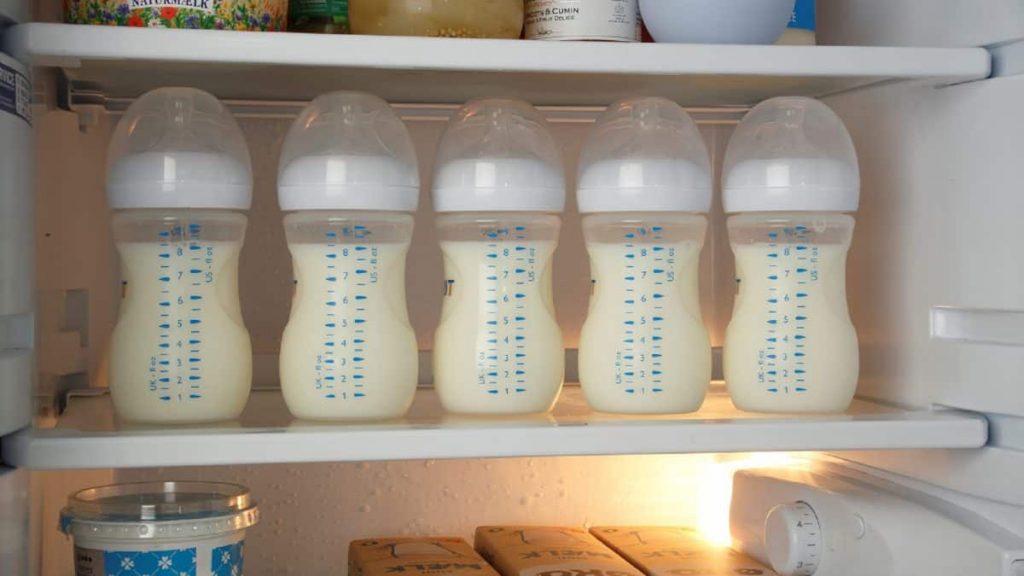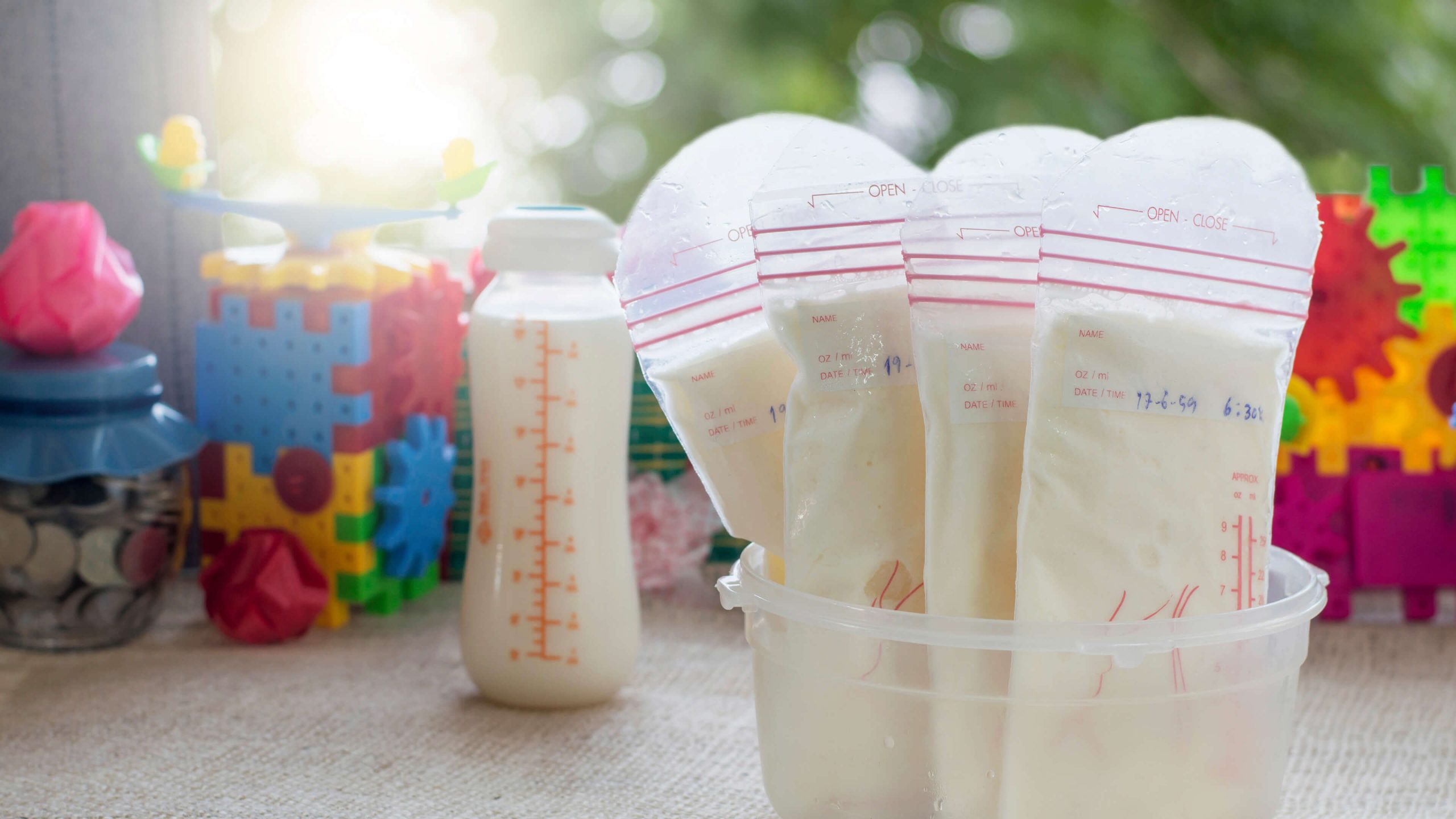Breast milk is the prime nutrition for newborns. Moreover, it’s produced by the mammary glands found in the woman’s breasts. In addition, it’s best known for containing lots of healthy properties. This includes fat, protein, carbohydrates, minerals, vitamins, etc.
However, breast milk can spoil quickly. This is usually because it’s not properly stored or used. That’s why many mothers want to know can warmed breast milk be refrigerated again.. To learn the answer, simply read this short article.

Can Warmed Breast Milk Be Refrigerated Again?
The short answer to this common question is yes, it can, provided that you consider the following. Read it carefully.
Warmed breast milk can be refrigerated again for up to 24 hours. However, you mustn’t refreeze it. In addition, if your baby doesn’t finish the bottle right away, you can still use it within 2 hours. However, by this I mean if you plan on leaving it at room temperature, and not in the refrigerator. Therefore, if you leave it outside the fridge and don’t use it within that time, you must throw it away.
Furthermore, as soon as you warm up the breast milk, you should give it to your baby instantly. Besides, you mustn’t leave warm breast milk to sit for too long at room temperature. Instead, place it in the refrigerator.
Using this simple advice will help you successfully prevent your breast milk from spoiling. In addition, by storing it in the fridge or throwing it away you will also prevent any bacteria from breeding in it.
Continue to read and learn more about the proper way to warm it.
How to defrost breast milk
After learning can warmed breast milk be refrigerated again, I reckon it’s important to know how to defrost it too. Defrosting your breast milk properly is equally crucial for keeping all its healthy properties.
What’s more, the better you defrost your breast milk, the lower the chances are of it getting spoiled. So all you have to do is take out the breast milk from the freezer and put it in the refrigerator. I usually recommend you do this step the night before using it.
As I previously mentioned, whatever you do, avoid the stove and the microwave oven. Let it spend the night in the refrigerator. The next morning take it out and gently warm it by using a bowl filled with warm water.
How to warm breast milk
I’ll start by saying you mustn’t use the microwave oven. This is because it emits more intense heat. Therefore, overheating the milk can destroy several healthy properties of breast milk.
Additionally, these ovens are known for providing unequal heating. This means that some areas of the milk can still be cold and others too hot. By being too hot, the milk can easily burn the baby’s mouth and throat.
Besides the microwave, you shouldn’t use the stove either. I say this because mothers usually put the container with the breast milk in a pot of boiling water. This way, the milk can overheat. As I said, overheating is something you must avoid when warming your breast milk.
So how to properly warm breast milk? Simply put the frozen milk container in a bowl filled with warm water. Let it stay there for a few minutes. Moreover, make sure that the cap of the container is above the level of the water.
If the water gets cold, just replace it again with warm water. In addition, test the warm breast milk temperature before feeding your baby. To do that, just put a few drops of the milk on your wrist.
Read more: How to Sit When Pumping Breast Milk

Properly Store Your Breast Milk
After you have successfully expressed the milk from your breasts, pour it in a container or breastmilk storage bag. In addition, make sure that the container or the bag is clean. Secondly, take into consideration their material. They should be glass or plastic and have tight lids.
When it comes to storing it in the refrigerator, you must know that the breast milk can stay there only for 4 days. On another hand, if you are storing it in the freezer, then you can leave it there for up to 6 months.
However, if you are planning on leaving your breast milk at room temperature, then you can only leave it like that for 2 hours. In addition, I must mention that the room temperature must be 77°F or even colder than that.
So as you can see, the three main factors for proper breast milk storage are the material of the container, the temperature, and the storage time. What’s more, you especially mustn’t forget the storage time. It’s important to keep the quality of your breast milk.
Additional storage advice
To simplify the storage process for you, I have included an additional piece of storage advice. So, I strongly recommend you put date labels on the containers. This will help you know which container is the oldest and which one is the latest.
Secondly, avoid storing the containers with your breast milk on the refrigerator’s door. This is because usually when the door is opened, the temperature changes. Moreover, the stored breast milk should be submitted to one constant temperature.
Next, take into consideration the feeding time. By this, I mean that sometimes you may express more milk from your breasts than the baby currently needs. Therefore, it’s best to store the rest in the freezer, instead of the refrigerator.
Also, you should always store your breast milk in smaller amounts. This way you will avoid wasting it. Usually, it’s best to store it for up to 4 ounces.
Also read: How to Use a Manual Breast Pump
Conclusion
In conclusion, warmed breast milk can be refrigerated again. All you have to do is store it properly and pay attention to the storage time. In addition, make sure you use glass or plastic containers that properly handle the warming process. To properly warm it, use a bowl of warm water.
On another hand, to properly store it in the refrigerator, put a date on the container. Also, avoid placing it on the refrigerator’s door.








